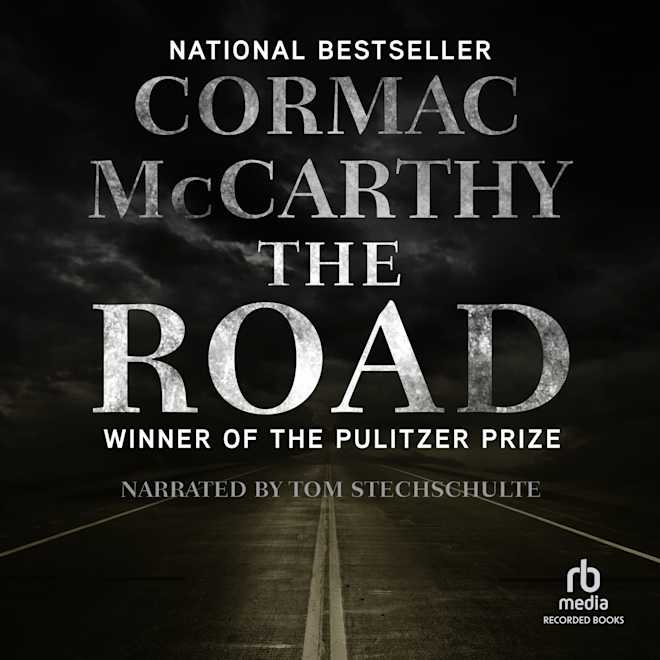Cormac McCarthy Books: A Comprehensive Guide

Cormac McCarthy, a towering figure in American literature, left behind a legacy of twelve novels characterized by their bleak landscapes, stark prose, and unflinching exploration of human nature. His work, defying easy categorization, transcends genre boundaries, weaving together elements of Southern Gothic, Western, and crime fiction with philosophical depth and stylistic innovation. This comprehensive guide will delve into McCarthy’s oeuvre, examining his individual works, recurring themes, writing style, and enduring cultural impact.

I. Exploring the Books: Genres and Themes
McCarthy’s career spans several decades, marked by a remarkable evolution in style while maintaining consistent thematic preoccupations. His early novels are often categorized as Southern Gothic, reflecting a preoccupation with sin, violence, and the decay of traditional values within specific Southern settings. Later works transition towards the Western genre, though still maintaining the same brutal honesty and philosophical undercurrents. His later career, however, sees a departure from strict genre conventions, blending elements of crime fiction, philosophical inquiry, and even hints of science fiction into his narrative structures. While his books may shift in setting and plot, the underlying exploration of morality, faith, and the human condition remain constant throughout his work.

A. The Classic (or Southern) Period
-
The Orchard Keeper (1965): McCarthy’s debut novel, The Orchard Keeper, sets the stage for many of his recurring themes. Set in rural Tennessee during the early 20th century, it follows a young man’s quest for vengeance after his father’s murder, yet the novel complicates simplistic notions of guilt and justice. While not his most polished work, it offers a compelling glimpse into his early style and preoccupations.
-
Outer Dark (1968): This bleak and relentlessly grim novel is considered by many to be a masterpiece. With its biblical allusions and stark amorality, Outer Dark explores the consequences of incestuous relationships and the despair of a landscape mirroring the inner turmoil of its characters. The novel foreshadows the desolate wanderings of The Road and the unsettling familial dynamics of The Passenger and Stella Maris.
-
Child of God (1973): Continuing the stark and unforgiving tone of Outer Dark, Child of God delves into the depravity of a violent drifter in the Tennessee mountains. This pitiless portrayal challenges our perceptions of faith, morality, and even the benevolence of God, forcing readers to confront the bleak realities of human existence and the omnipresence of degradation and despair.
-
Suttree (1979): While still anchored in the American South, Suttree represents a shift towards a more expansive and linguistically ambitious style. Set in 1950s Knoxville, Tennessee, this picaresque novel follows Cornelius Suttree, a man rejecting his privileged upbringing to live among the marginalized. The novel meanders, yet its exploration of fate, desolation, and the human condition remains central to McCarthy’s style.
B. The Middle (or Western) Period
-
Blood Meridian (1985): Frequently hailed as McCarthy’s masterpiece, Blood Meridian is a pivotal work. Set along the U.S.-Mexico border in the 1850s, it follows a 14-year-old boy’s journey with the Glanton gang, a ruthless group of scalpers. The novel’s exploration of violence, its philosophical depth, and its depiction of the American frontier as a place of apocalyptic brutality make it a powerful and unforgettable read.
-
All the Pretty Horses (1992): This novel, the first in McCarthy’s “Border Trilogy,” marked a significant turning point in his career, bringing him widespread recognition. Set a century after Blood Meridian, the story follows two teenage boys who journey from Texas into Mexico to work on a ranch. While still containing elements of tragedy and hardship, All the Pretty Horses offers a more nuanced depiction of hope and resilience in the face of adversity, marking a stylistic shift toward greater accessibility.
-
The Crossing (1994): The second installment of the Border Trilogy, The Crossing, stands apart from All the Pretty Horses yet shares a thematic connection. It features a different pair of young cowboys crossing the border from New Mexico into Mexico, with a focus on themes of longing, regret, and the cyclical nature of life and loss. This novel displays McCarthy’s signature spare prose while being considered comparatively more accessible.
-
Cities of the Plain (1998): The concluding volume of the Border Trilogy, Cities of the Plain, reunites characters from All the Pretty Horses and The Crossing. Set in 1950s New Mexico, this volume revisits themes of violence and despair, focusing on Cole’s relationship with a prostitute in Juarez and exploring themes of death, retribution, and the consequences of human choice.
C. The Late Period
-
No Country for Old Men (2005): While geographically situated within the border region, No Country for Old Men represents a shift towards a more plotted narrative structure, drawing closer to the conventions of the crime novel. This book details a drug deal gone wrong. Although admired for its language and scenes, some consider it less ambitious than his earlier works, potentially because of the constraints imposed by a highly plotted structure.
-
The Road (2006): McCarthy’s Pulitzer Prize-winning novel, The Road, stands apart as a post-apocalyptic narrative. The story follows a father and son traversing a desolate American landscape, battling starvation, violence, and the despair of a world decimated by an unspecified catastrophe. Unexpectedly, the novel also conveys moments of tenderness and a faint glimmer of hope.
-
The Passenger (2022): Published after a sixteen-year gap, The Passenger introduces a new direction for McCarthy. The story begins with Bobby Western, a salvage diver investigating a plane crash, and unexpectedly pivots to explore quantum mechanics and the nature of existence. This novel showcases longer dialogue sequences and incorporates historical events, but some find its ending unresolved, intentionally relying on its companion volume for thematic completion.
-
Stella Maris (2022): The companion to The Passenger, Stella Maris, is presented as a series of dialogues between Alicia Western, Bobby’s sister, and her therapist at a psychiatric facility. This leaner novel delves into the psychological depths of Alicia’s mind, exploring themes of mental illness and the search for meaning in a complex and unpredictable universe. Its structure complements the open-endedness of The Passenger, offering a different, yet essential, perspective on the characters and themes shared between the two volumes.
II. Cormac McCarthy: The Author and His Craft
Cormac McCarthy’s enduring appeal stems not only from his compelling narratives but also from his distinctive writing style. His prose is characterized by its starkness, minimalism, and powerful evocative imagery. He deliberately avoids traditional punctuation, particularly quotation marks, creating a unique and immersive reading experience. His dialogue is realistic and often violent, mirroring the harsh realities of his characters’ lives. The settings of his novels are meticulously rendered, serving as both a backdrop and a crucial element in shaping the characters’ fates. McCarthy’s inspirations range from the landscapes of the American South and West to philosophical and theological discussions. His works frequently grapple with complex ethical dilemmas, existential anxieties, and humanity’s capacity for both profound love and horrifying violence.

III. The Educational Value and Life Lessons of McCarthy’s Works
While not explicitly didactic, McCarthy’s novels offer profound insights into the human condition. His works challenge readers to confront uncomfortable truths about violence, morality, and the complexities of faith. Through his stark depictions of suffering and despair, he compels readers to examine their own values and beliefs. McCarthy’s novels implicitly explore profound questions of good and evil, redemption and damnation, and the search for meaning in a seemingly indifferent universe. They offer a deep dive into human nature that can spur self-reflection, ethical consideration, and a more profound understanding of human experiences, even if they often leave the reader in a state of discomfort and thoughtfulness.
IV. Libraries and Archives: Preserving McCarthy’s Legacy
McCarthy’s novels have become staples in many public and academic libraries, testifying to their lasting appeal and literary significance. Digital libraries also provide access to his works, expanding their reach and making them available to a wider audience. The textual analysis, literary criticism, and critical discussions surrounding McCarthy’s works are readily available through various academic archives. These resources preserve and contribute to the ongoing understanding and appreciation of his unique contribution to American literature.
V. Cultural Impact: Adaptations, Awards, and Communities
McCarthy’s novels have been adapted into several successful films, including No Country for Old Men, The Road, and All the Pretty Horses. These adaptations have further amplified his literary influence, bringing his works to a broad audience beyond the realm of literary readers. He has received numerous awards for his literary achievements, notably the Pulitzer Prize for The Road, affirming the recognition of his profound impact on American literature. Furthermore, online forums and communities devoted to McCarthy’s writing provide spaces for literary enthusiasts to engage in discussions, analyze his works, and share their personal interpretations. These online communities contribute to the ongoing celebration and interpretation of McCarthy’s work, ensuring that his novels continue to resonate with and challenge readers for generations to come.
This exploration of Cormac McCarthy’s works aims to offer a comprehensive perspective, from the specific elements within his novels to their lasting impact on the literary world and popular culture. His works, while often dark and unsettling, remain undeniably powerful and continue to captivate and challenge readers, leaving a lasting and significant mark on the literary landscape.